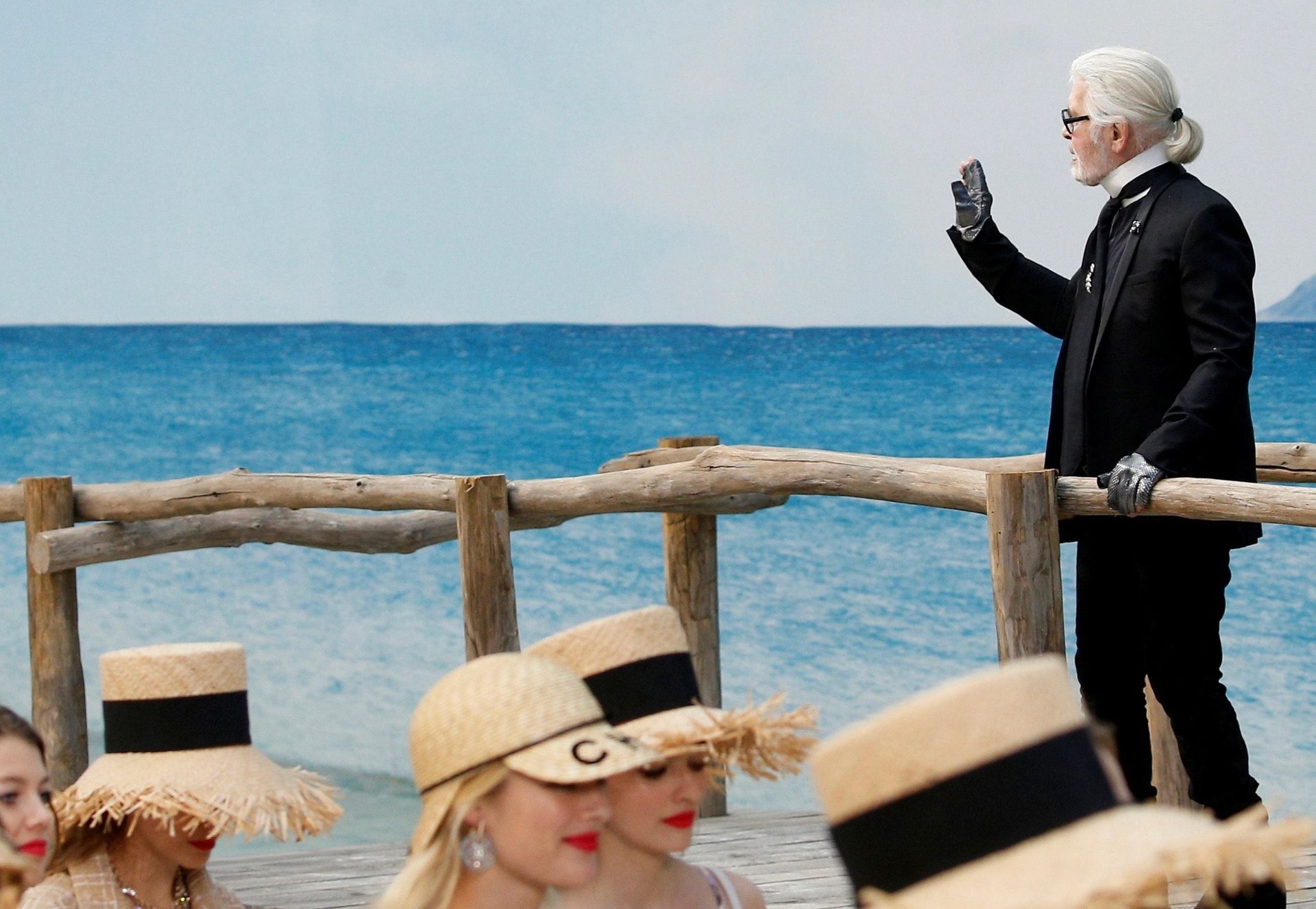Karl Lagerfeld was a study in contradictions
The iconic fashion designer Karl Lagerfeld died today (Feb. 19) at age 85. In one of his last interviews, published in New York Magazine’s The Cut in December, he said he was ”born to survive.”


The iconic fashion designer Karl Lagerfeld died today (Feb. 19) at age 85. In one of his last interviews, published in New York Magazine’s The Cut in December, he said he was ”born to survive.”
That he passed shortly thereafter is not problematic, for Lagerfeld was never hobbled by a foolish consistency. In fact, he was a study in contradictions.
The ever-aristocratically-dressed German artist, who turned the house of Chanel back into a fashion force when he took it over in 1982, considered himself “working class.” He extolled the virtues of labor, though he epitomized luxury and favored private jets. Lagerfeld loathed cats until he became devoted to his own pet, Choupette, who sat on pilots’ laps in those aforementioned jets and from whom he claimed to receive texts. And though his life was anything but dull—Lagerfeld hung around in Andy Warhol’s Factory in his youth, and late in life, his elaborate fashion shows drew the world’s most rich, beautiful and powerful people—he claimed to like boring things, as a sign on his desk attested.
This unique blend of rigidity and flexibility, his strong sense of self combined with a willingness to evolve, may have been the secret to his success. Lagerfeld was determined to become famous, and claimed to know that he would be as a child at age six. Yet he also claimed that he could have been a farmer because he loved cows. In other words, he was difficult to pin down.
On the one hand, he was one-of-a-kind and seemed to be unlike any other designer, working tirelessly on multiple collections each season. On the other hand, Lagerfeld never became preoccupied with his own story—indeed, in recent decades, his glory was associated with his work for Chanel and Fendi, rather than the designs he sold under his own name for Karl Lagerfeld Collection.
While he reinvented the classic tweed suits and trademark pearls of Chanel for the postmodern era—integrating denim and leather—his own style hearkened to days long gone by. Lagerfeld adhered to an old-school style, featuring a 19th-century cravat and coat with tails, dramatic shirts, and gloves. He was a diminutive man taking the stage at the end of each Chanel show looking like a total throwback to yesteryear.
But he wasn’t interested in looking backward and wasn’t actually nostalgic. When asked if he’d write a memoir, he told The Cut, “I have nothing to say. I make an effort not to remember. I don’t have to live in my own dusty past.”
Of course, he didn’t have to—no doubt many biographers will eagerly take up his history themselves, immortalizing the quirky and contradictory designer. But perhaps the most important thing to remember about Lagerfeld isn’t his artistry or life, but the wisdom he acquired. At 85, he still admired youth culture and expressed his respect for younger generations, who he said were freer and more informed than he’d been. Yet he never took to the internet and was comfortable in his skin, at home in his elderly self.
Lagerfeld never tried to emulate anyone else. “If you want to look old, try to be young,” he advised wryly. “Nothing is worse than that.”